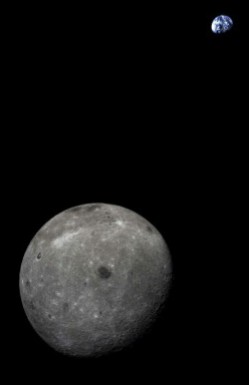The Earth/Moon double planet, as seen by China’s Chang’e 5 probe

China’s Chang’e 5 probe has taken a spectacular image of the Moon and Earth as it whips around the Moon on its circumlunar test flight.
Though China has released little additional information about the status of the mission, this image demonstrates that the vehicle is functioning well, sending back data, and that they are controlling its operation precisely and exactly as planned. The spacecraft is scheduled to return to Earth on November 1.
Meanwhile, China’s second lunar probe, Chang’e 2, now in solar orbit about 60 million miles from Earth, continues to operate four years after launch

China’s Chang’e 5 probe has taken a spectacular image of the Moon and Earth as it whips around the Moon on its circumlunar test flight.
Though China has released little additional information about the status of the mission, this image demonstrates that the vehicle is functioning well, sending back data, and that they are controlling its operation precisely and exactly as planned. The spacecraft is scheduled to return to Earth on November 1.
Meanwhile, China’s second lunar probe, Chang’e 2, now in solar orbit about 60 million miles from Earth, continues to operate four years after launch
